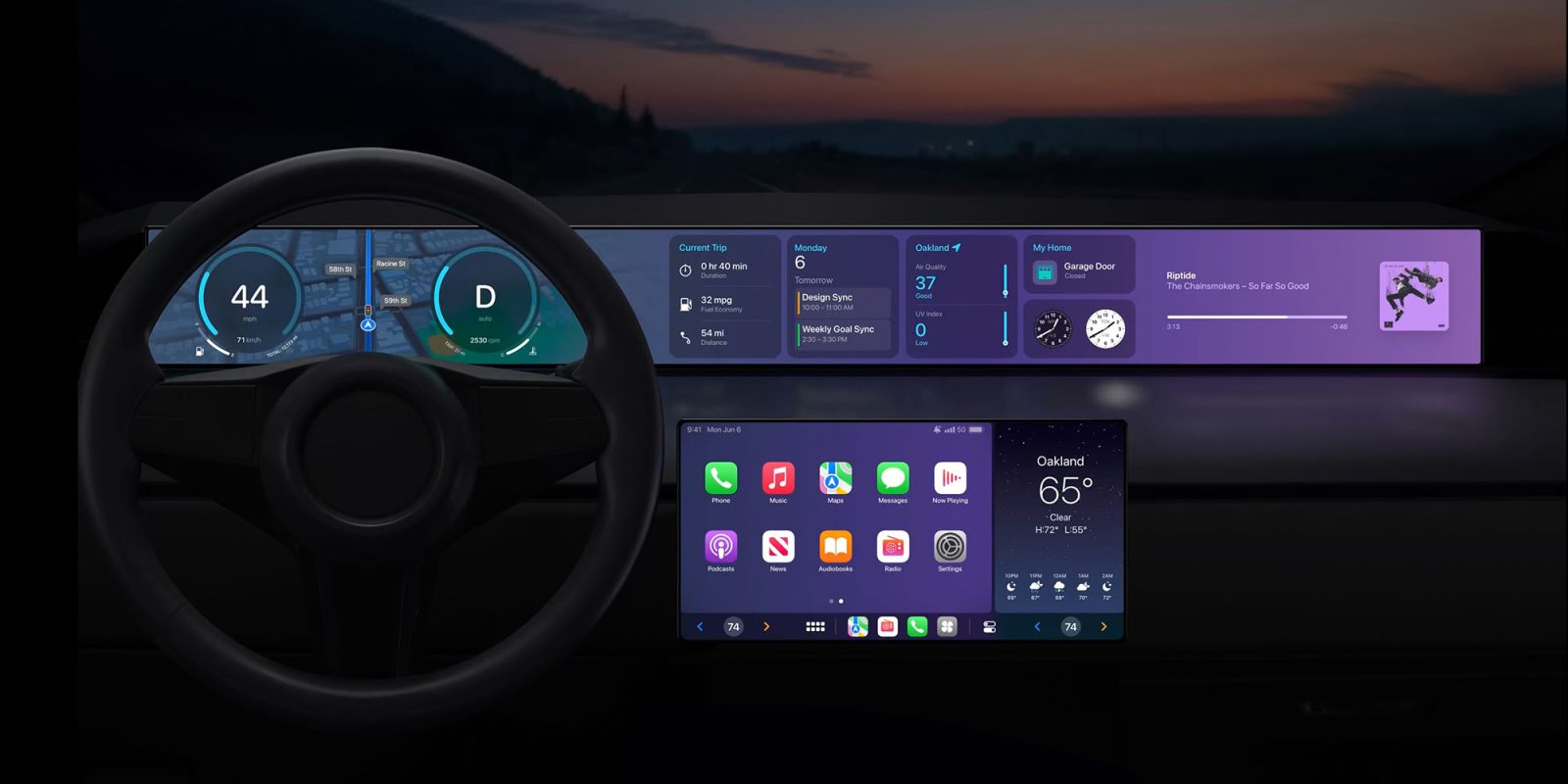
Apple hasn’t had much luck persuading car makers to adopt its next-gen CarPlay, in which its own UI takes over all or most of the vehicle’s displays. But a feature known as punch-through might be the compromise which gets the company at least some of the way there.
Punch-through was initially designed to allow the car’s own UI to take over in very limited cases, like automatically engaging backup cameras when reverse gear is selected, but it could be applied more generally to keep everyone happy …
Next-gen CarPlay
The CarPlay we all know and love is very simple. Connect your iPhone to your car via a wired or wireless display, and the CarPlay UI is displayed on one of the car’s screens.
It was at WWDC 2022 when Apple announced a next-gen CarPlay with much bigger ambitions. The idea here was a far deeper integration, in which the car systems would feed data to your iPhone, and it would then take over all or many of the car’s screens to display that data – including the instrument cluster.
At the time of announcement, there was a fairly impressive list of car makers said to be on board: Land Rover, Mercedes-Benz, Lincoln, Audi, Volvo, Honda, Nissan, Ford, Jaguar, Acura, Polestar, Infiniti, and Renault. Porsche and Aston Martin were said to be first in line.
But car makers appear to be wavering
Since then, however, things have gone very quiet. Nothing has launched. Most of the brands on that list have said nothing about their plans, and one of them – Mercedes – has since said it’s out.
Mercedes-Benz CEO Ola Källenius made it clear that the company has no plans to adopt next-generation CarPlay – despite being touted by Apple as a partner […]
Källenius made it clear in his response that next-generation CarPlay support isn’t in the cards for Mercedes-Benz cars. Instead, the company is focused on its own Mercedes-Benz operating system – which is slated to debut next year.
Punch-through could be the key compromise
While Apple wanted its UI to essentially take over all of the car’s screens, the company did recognize that there would need to be exceptions.
There would, for example, be nothing an Apple UI could bring to the party for something like a backup camera when reversing – you just want the rear view to fill the screen. And some car makers might include advanced features which Apple’s UI doesn’t support.
To cater for both these cases, next-gen CarPlay allows for a feature known as punch-through. This is where the car systems tell CarPlay they need to take back control of the displays.
But as The Verge notes, there’s nothing to stop car makers using punch-through anytime they like.
Carmakers can use punch-through UI for basically anything they want and even deep-link CarPlay buttons to their own interface.
And that could be the thing which persuades them to sign on. Instead of the CarPlay UI being king, car brands can choose exactly when they want their own UI to be used, and when they will allow CarPlay to take over.
[It] feels like a lot of Apple realizing that carmakers aren’t going to just give up their interfaces — especially since they’ve already invested in designing these sorts of custom interfaces for their native systems, many of which now run on Unreal Engine with lots of fun animations and have Google services like Maps integrated right in. Allowing automakers to punch those interfaces through CarPlay might finally speed up adoption — and it also might create a mix-and-match interface nightmare.
9to5Mac’s Take
Most (but not all) car makers accepted standard CarPlay because they knew it was popular with many of their customers, and it was a selling-point for the car.
But next-gen CarPlay is far more of an all-or-nothing approach – where car brands had to completely cede control of the displays – and that’s a much tougher sell. Most car makers see their infotainment systems as a core part of the brand experience, and others hope to use it to sell subscription services.
Punch-through could well solve this. Apple places no limits at all on when it can be used, so an auto company could, if it wished, apply it to almost every function, with just a few exceptions.
What will be most interesting to see is how this evolves over time. Ultimately, it’s car buyers who call the shots. If they really want next-gen CarPlay, and one brand doesn’t support it, they will give their money to one that will.
I suspect we might well see a future where car makers allow Apple very limited access to their screens in the early stages, but buyers demand more, and they eventually have to comply.
FTC: We use income earning auto affiliate links. More.




